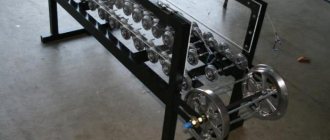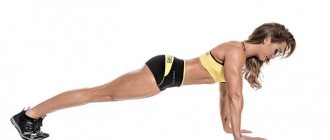Young mothers and fathers are always kind to their baby. Any changes settle in them. After all, inexperienced parents know little about the behavior of newborns. It often happens that the baby arches his back. Is it dangerous? And what should you do in such situations?
You should definitely see your pediatrician as this could be a warning sign. Only a specialist can make the correct diagnosis.
What are the possible causes of arched back in a newborn?
If a child arches his back regularly, this may indicate increased intracranial pressure. This is a symptom of various types of diseases such as hydrocephalus, meningitis, encephalitis, brain tumor, abscess, injury or In such a case, you should visit a doctor as soon as possible.
Frequent “standing on the bridge” may mean that the child has a back problem. In this case, you should contact a neurologist. He will examine the child, give directions and prescribe a special gel to rub into the cervical and spinal area. According to medical statistics, nine out of ten infants suffer from impaired muscle tone. Timely treatment will completely correct the defect.
Sometimes a baby arches his back if he notices an interesting object next to him. For a more thorough study, he tries in various ways to look at it more carefully. In this case, you just need to turn the baby in the required direction.
It also happens that by arching his back, a child shows his stubbornness or whim. At the same time, the baby may become angry and growl, expressing his dissatisfaction and desire to achieve personal freedom. There is no need to worry, you just need to make sure that the baby does not get injured. If your newborn is arching his back and acting up, gently and persistently get him to stop such actions.
In the case when arching of the back is accompanied by crying and tucking of the legs, this is most likely intestinal colic.
Try to relieve your baby's pain with a gentle tummy massage. And watch his diet. Possible consequences
If in early childhood a child suffered from neuralgia (this is the case when a baby arches his back due to hypertonicity), then by the age of 15-18 he may have health problems. A teenager may have: headaches, sleep disturbances, learning delays, lack of concentration, osteochondrosis, vegetative dystonia, behavioral disorder. In addition, pathologies such as flat feet, vascular disorders of the brain and convulsive syndrome may develop.
With age, inharmonious development, headaches, inappropriate behavior, and anxiety may appear.
As we can see, the consequences are quite serious. So if a baby arches his back, this is a rather unpleasant sign. There is no need to waste time; you should consult a doctor immediately. Timely medical care will allow your child to avoid health problems later.
The arrival of a child in a family is a joyful event that completely changes the family’s lifestyle. The birth of a baby fills every day with meaning, pleasant chores and an incredible feeling of happiness. The first 2-3 months of a baby’s life are the most difficult for the whole family. They are concerned about issues of proper nutrition, restful sleep, health and timely development of the baby. One of the problems that worries all mothers and fathers without exception is the problem of newborns throwing their head back and arching their back.
Why does a 1 month old infant lie with his head thrown back and arched? Is this a sign that he has some dangerous disease? It is impossible to accurately answer such a question without a special medical examination.
If throwing back the head and arching the back are accompanied by frequent screaming and crying, poor sleep and poor health of the baby, this is a reason to immediately consult a doctor. If a newborn sleeps calmly, smiles often, eats well and with pleasure, but often bends over after feeding or sleeping, then maybe he just lay in one position for a long time and wants to stretch his tired muscles.
Possible reasons
There may be several reasons why a child arches and lies with his head thrown back. They can be associated both with the baby’s usual whims and bad mood, and with the baby’s state of health. The main and most common reasons are:
- Intestinal colic.
In the first days of life, babies often suffer from digestive problems. or a warm compress applied to the tummy. In addition, special medications or regular medications can relieve symptoms. - Colds and nasal congestion.
Having difficulty breathing, the child may bend over and throw back his head in an attempt to get rid of breathing problems. It is necessary to rinse the baby's nose with medicines, chamomile infusion or salt. When a runny nose and nasal congestion persist for a long time, you need to show your child to a pediatrician. - Desire to roll over onto stomach.
An arched back is not necessarily a sign of health problems. Perhaps the baby just wants to roll over on his stomach to take a closer look at some object. You just need to help him turn around and take a closer look at what he wants. - Convenience.
If the baby lies quietly in his sleep at night in this position, then he is simply comfortable. - Muscle hypertonicity or intracranial pressure.
If throwing back the head and arching the back have become a constant occurrence in the baby’s life, this is a serious reason to consult a doctor as soon as possible.
The baby may be capricious and restless during feeding, often due to dissatisfaction with the taste of mother's milk. Adjusting the mother's diet will help change the taste. Another reason for capricious behavior during feeding may be that the baby simply does not have time to eat or suck.
It may also be that the child is full, but does not want to move away from his mother. Let him lie down for a while, clinging to your chest, and he will calm down.
Symptoms and treatment of muscle tone disorders
According to medical research, almost 90% of babies suffer from impaired muscle tone before reaching the age of 5-6 months. It’s quite simple to check whether your baby’s tone is increased. This can be done starting from 3 months: leave the baby lying on his stomach and watch whether he tries to raise his head (see also:). Throwing the head back with raised shoulders and without support on the hands is a sign of problems with tone. In general, babies should begin to roll over when they are over 7 months of age. Infants suffering from hypertonicity often strongly arch their backs in a bridge, turning their heads to the side where the problem is clearly expressed, and roll over onto their backs.
To relax muscles and relieve hypertension, a massage is suitable, which should be prescribed by a neurologist or pediatrician. It will be better if the specialist himself shows the necessary movements to the parents.
Primary requirements
Regardless of what the garden bridge is made of, the following requirements apply to it:
- The minimum height of the crossing above the level of the reservoir should be 20 cm, so that in case of heavy rainfall the water does not reach the structure;
- The bridge must have railings - wrought iron railings, wooden gratings, rope rope;
- The structure must withstand loads of up to 300 kg.
The corresponding conditions can be contradicted if the crossing is created solely for decorative purposes. Then it is allowed to make the reservoir dry - without water. The analogue with water requires a safe depth - no more than 45 cm.
Symptoms of intracranial pressure
A serious and requiring immediate examination by a doctor reason that a child arches, throws his head back and screams may be increased intracranial pressure (we recommend reading:). Any treatment for this problem is carried out under the supervision of a doctor. You can try to find out the presence of intracranial pressure in a child yourself.
Lift the child, carefully holding him under the armpits, and place him on his feet. If the baby only stands on his toes and not on his full foot, he probably has problems with intracranial pressure.
Consequences of intracranial pressure or hypertonicity
If an infant arches his back due to intracranial pressure or abnormalities associated with hypertonicity, then the lack of timely treatment can lead to serious consequences in the future. Memory problems, osteochondrosis, headaches are just a few of the possible problems that such a child may experience during adolescence.
Watch your child. If the baby is 2-4 months old, he is often capricious, screams and arches his back and throws his head back - you should consult a pediatrician. The doctor will prescribe all the necessary medical tests that will eliminate serious health consequences in the future.
A newborn baby is a reason for endless joy for his parents. However, he is small and defenseless, so mom and dad are very worried if the baby begins to behave strangely, especially if the baby arches his back and throws his head back for no apparent reason.
Is this phenomenon dangerous and is it worth taking any action? First you need to remember when the child began to do such things, and under what circumstances the baby arched. It is necessary to observe the baby, record oddities in behavior, so that if she contacts a specialist, the mother will be able to answer the questions of the doctor conducting the examination.
Red is the color of happiness
According to popular beliefs, people expect happiness from the color red. A bridge painted this color will block the way for evil forces. Red fits perfectly into traditional Japanese gardens, but in other cases it is difficult to combine with the surrounding elements.
Why does a baby arch his back and throw his head back?
The circumstances under which a child adopts an atypical position are very important. They will help you understand what causes such actions in your baby and prevent their further occurrence.
During feeding
If an infant throws his head back when feeding, then most likely he does not like the taste of mother's milk. Perhaps the woman’s diet contains foods that give the baby’s main food an unpleasant aftertaste. It is worth remembering whether new dishes were introduced to the menu. Or maybe mom just showed a moment of weakness and tried a piece of the forbidden food? Eliminating foods that affect the taste of milk can help: the child will stop frightening his parents with an unnatural feeding position.
Another reason why a child tries to stand on the bridge when eating may be an ordinary whim: the child is full, but does not want to part with the breast. In this case, it is necessary to distract him - show him his favorite toy or turn on music.
During sleep
If arching of the back and tilting of the head during sleep is observed in a child who is under 4 months old, this is, according to doctors, a variant of the norm. The child is not yet used to having a huge space at his disposal and has not fully learned to control his own body.
Heredity also has a huge influence. Observe the position in which the newborn’s father sleeps, ask your loved ones about the position you most often take in your sleep. Perhaps the baby takes a position that seems strange at first glance at a reflex level.
If an older child takes a similar position when sleeping, it is worth showing the baby to a doctor. A seemingly harmless habit can turn out to be a symptom of a dangerous disease and provoke various problems in the future, including osteochondrosis, vegetative-vascular distance and even epilepsy.
When she cries
If, during another bout of crying due to illness, hunger or discomfort, the baby tries to stand on the bridge, the reason for this is most likely the immaturity of the nervous system, which is characteristic of all infants. Over time, this habit goes away.
But throwing back the head while the newborn is crying can also be a sign of muscle hypertonicity. It is best to play it safe and show the baby to a neurologist.
Lying on your back
Every kid tries to explore the huge world. In the first months, when the back muscles are weakened, in order to see what is happening behind the baby’s back, it is easier to throw his head back and bend over than to turn his body. If a baby arches his back while lying on his back, he may simply be trying to look at something that is out of his field of vision.
Advice! To avoid such tricks, it is necessary to remove all sources of sound located behind the crib where the baby sleeps, and not talk near the head of the bed.
Is arching a baby’s back a sign of pathology?
Every parent should remember that arching a child may be a sign of some kind of disorder:
- Torticollis. This pathology is diagnosed mainly in newborns born by caesarean section or in the event of complications during childbirth. Such a violation is most often detected in the maternity hospital;
- High intracranial pressure. A dangerous disease that can cause serious health problems. In addition to throwing the head back, symptoms of hypertension include eyeballs that protrude strongly forward, the eyes being covered by the lower eyelid, irritability and trembling of the chin when crying. However, the famous pediatrician Komarovsky claims that when crying, blood pressure increases in all newborns, and short-term manifestations of this condition are not dangerous;
- Hypertonicity. The most common reason why a baby arches. In the first three months of life, a similar diagnosis is made to almost all infants. If it persists afterward, you need to show the baby to a specialist. Ignoring such a disease can lead to serious consequences - poor posture, speech defects, club feet and improper walking;
- Colic. If the baby cries and arches, and does not calm down when you pick him up, the baby most likely has developed colic. In this case, it is necessary to gently massage the baby’s tummy, and also give a medicine that helps get rid of this unpleasant phenomenon. When the child gets older, this problem will no longer bother him.
That’s when you should panic and run to a good neurologist, this is pure neurology, God grant that it’s increased intracranial pressure and not convulsions, but treatment is mandatory, and when they say that the child “just wants to roll over” is complete stupidity, and the fact that such a condition is normal is even greater stupidity. Treat your children, especially in the first year of life, because there have been no healthy children for the last ~15 years
Answer
The baby arches his back, cries restlessly, sometimes “stands on the bridge” - the child’s body reacts in a similar way to the development of pathological conditions in the nervous and muscular systems. Timely treatment is the key to ensuring that the child’s further development will be correct and the baby will grow up absolutely healthy.
Gutta-percha child.
If you find a child standing “on a bridge” in his crib, this does not mean that the baby has developed early gymnastics abilities. The reason for such acrobatic stunts may be an increase in intracranial pressure or hypertonicity of the baby’s muscles. In both cases, a consultation with a neurologist will be required.
Usually, these phenomena differ from each other and parents simply need to know these features.
In both cases, only a doctor can diagnose the disease. He will be able to recognize when a child requires serious treatment, and in which cases it is quite possible to get by with a massage and a set of exercises to relieve muscle tension.
Lightweight wooden structure
A wooden bridge of simple design can be built without any special skill. By following the work process in the provided material step by step, it is not difficult to achieve the desired result.
Massage and physical therapy.
As mentioned earlier, the cause of increased intracranial pressure can be:
- hydrocephalus;
- meningitis;
- abscesses and fistulas of the brain;
- traumatic brain injury;
- violation of metabolic processes.
In all these cases, adequate and timely treatment will stop the development of such diseases and eliminate the cause of their occurrence.
If the cause of the baby’s arching is an increase in muscle tone, then we will treat the child at home.
Parents often believe that prescribing a massage requires certain skills and finding a professional massage therapist who will treat the child in several sessions. It's not that simple here. To begin with, I want to say that a relaxing massage, which is prescribed for increased muscle tone, can be mastered by any of the parents. It is important to know the techniques and sequence of movements. The number of therapeutic massage sessions to completely eliminate such symptoms may require more than one, or even two courses. And this may not have the best effect on the parent’s wallet. Try to master massage techniques yourself, especially since babies often react negatively to the touch of strangers. And the sensitive and attentive hands of mom or dad can feel the baby’s negative reaction:
- Start stroking and light rubbing from the lower extremities. All movements should be directed from bottom to top;
- Next, move to the back area, using circular and tong-shaped light kneading, gradually moving higher;
- The tummy massage is performed with shallow circular movements in a clockwise direction, the arms are massaged in the same way as the legs.
Your baby will stop arching his back and fussing if you provide therapeutic exercise and regular relaxing massages.
Typically, 4-5-month-old children are “complete workaholics”; thanks to their perseverance and intelligence, they sometimes manage to perform tricks that, due to age and physical development, seem to be “not yet allowed.” For example, when trying to sit up, they try with all their might to lift their back from the crib, but their head “outweighs” - and the child literally “stands on the bridge.”
But here several surprises await them. Firstly, the back is really still weak and bends under the weight of the head (you can strengthen the back muscles with the help of massage and exercises. Secondly, in order to maintain balance, you need to rest with both hands on the bottom of the crib, otherwise you will fall on your side. And finally, thirdly, there is still residual hypertonicity in the legs, the child cannot straighten them at the knees and sits almost cross-legged, which completely negates his stability. Therefore, if such a child is placed “forcibly” (for example, in a child’s chair ), he can actually develop a curvature of the spine (especially if he suffers from rickets); if he sat down on his own, then nothing bad will happen - wise nature will lay the little worker on his side again in a few seconds.
Some children make no attempt to sit up. They have already come to the conclusion that “movement is my happiness!”, and are obsessed with the idea of crawling. Some of them decide to do everything by the rules and learn to get on all fours and then walk. Others begin to crawl like a “caterpillar”: first, from the “seal pose” they raise their shoulders high, then they peck their nose into the diaper and drag their butt and legs, then they push with their legs, covering a couple of centimeters, and - all over again. Still others simply randomly thrash the diaper with their hands and feet. If they are placed on a smooth surface, they begin to rotate around their own navel. After some time, they will develop the “crab style” - lying on their stomachs, throwing both arms forward and, pushing with their knees, crawling forward. The fourth, without further ado, simply rolls from end to end of the crib from back to stomach and back to back.
If an awake baby is not trying to sit up or crawl, he is most likely exercising his back and abdominal muscles by lying in the “airplane” or “fish” position - on his stomach, raising his shoulders and legs as high as possible, and humming happily. If he doesn’t do this either, it means that he has come across some kind of toy and is concentrating on feeling it, sniffing it and licking it.
At this age, the object of research, as a rule, immediately ends up in the researcher’s mouth, which is greatly facilitated by the itching gums in anticipation of the first pair of teeth.
With all this entertainment, we almost lost sight of the main thing: the baby finally learned to pick up objects on his own. Now he looks from the toy to his palm several times, then, taking aim, slowly moves his hand to the desired toy and... dac! - she’s already in his fist! While he still grabs the toy with his entire palm, opposing his thumb to the other four (if he doesn’t do this, carefully and politely correct his grip). So far it's a monkey grab. He will learn to pick up a toy with his fingertips much later.
If you give him a larger ball, he will probably try to grab it with both hands. Only in this case he will not use his fingers again.
The hands are more like two halves of pliers. But this skill will come with time.
And finally, the third thing that the baby cannot do is put the toy down and then remember about it again. It falls out of the hand itself when the child is distracted by something else. And, having missed the toy, the baby immediately forgets about it, as if it had ceased to exist.
Entertaining a 4-5 month old baby is usually a piece of cake.
At this age, Alyoshka spent hours playing with a tin of coffee, one half of which was painted red and the other half black. The jar was his favorite toy, and for about a month he treated everything else with contempt. Another “favorite” was a small tin drum, which he learned to beat with a rattle by the age of 5 months.
As before, try to ensure that your awake child has a good view of you and what you are doing.
Let him be a member of the family from the cradle. A four-month-old child can (with the permission of a neurologist and orthopedist) be placed in a jumper for 10-15 minutes (or, more precisely, “suspended”, since until the child has learned to sit on his own, he must hang on straps threaded under the armpits - please note this pay attention when you buy jumpers).
How to do a bridge from a standing position
The bridge, which is made from a vertical position, looks very impressive. Let this be your next goal once you get comfortable with the classic variation. Start training with a simple option and complicate the exercise with experience.
Walking down the wall
It is very difficult to immediately get into the bridge from a vertical position. Requires good flexibility and stability to perform. It's better to practice sliding down the wall smoothly to test your capabilities.
Find a free section of the wall of the house. Ideally, if you have access to a wall bars - it will be even easier. Place a mat underneath to make it easier to fall if you make a mistake.
- Stand with your back a short distance from the wall so that when you lean back, you can reach it with your hands.
- Bend your knees, arch back and raise your arms above your head. Place your palms on the wall.
- Slowly “walk” along the wall with your hands, gradually lowering yourself lower and lower. If necessary, move closer or move further away.
- Get to the floor and take the previously learned position - lean on your palms and feet, legs straight, back arched as much as possible.
- Stay in this position for a few seconds.
- Rise up slowly - lift your palms one by one and lean them against the wall. Climb up the wall until you can’t straighten up.
Continue training until you feel that you are more confident in moving your hands and can quickly get into the desired position.
Bridge from a standing position
Performed only when serious results are achieved in the previous exercise. Place a mat in the area where you practice.
- Get into the starting position: your back is straight, your feet are shoulder-width apart or slightly wider, your arms are extended upward.
- Bend your elbows and place them behind your head.
- Slowly bend back, gradually bending your knees and moving your pelvis forward. This way you can maintain your balance and not fall.
- Try to stay as close to your feet as possible to avoid falling.
- When you get low enough, you can rest your hands on the floor.
- Fix the position - emphasis on your feet and palms, maximum arch in your back, knees slightly bent.
Having learned to get into a bridge from a vertical position, you want to get out of it just as effectively. After all, after such a grandiose performance, you don’t want to sink to the ground.
But don’t rush – getting in is much easier than getting out. After all, in the second case, other muscles are involved.
How to learn to get up from the bridge gracefully
You can exit the bridge gracefully by following these steps in reverse order:
- In the final bridge position, you need to bring your hands as close to your feet as possible. Just rearrange them, as if stepping from hand to hand.
- Shift the load to your legs by bending your knees and moving your pelvis forward.
- Push off the floor with your palms, and then, tensing the muscles of your back, buttocks and legs, lift your body to a vertical position.
Now you can stand up from the bridge to your feet to impress the crowd.
There is another option to get out of this position - cross your legs forward so that your toes point to your palms, and rise up. Of course, this is a completely different level of skills, so you can limit yourself to the standard.
Elbow bridge
An additional type of bridge is to stand at the end not on your palms, but to bend your elbows and stand on them. It is performed almost the same way, only at the end you will have to bend even more and at the same time lean on your elbows.
- Take a standard starting position - straighten your back, spread your legs slightly wider than your shoulders.
- Bend your elbows and place your hands behind your head.
- Bend lower and lower until you can’t put your palms on the floor. But that is not all.
- Bend lower, gradually bringing your palms closer to your head until you can bend them completely at the elbow.
- Lean on the part of your arm between your elbow and wrist.
- Hold this position.
- The most convenient way to get out of this position is through a handstand.
Once you master this bridge variation, you will learn all the standard types. If desired, you can further complicate the tasks - raise your leg perpendicular to the floor, try to touch the back of your head to your calves in a bridge, etc. But this is at your discretion.
Games and exercises
What different toys!
You need: toys for hanging - balls of different colors, sizes and shapes, cylinders made of different fabrics, wooden or plastic, soft toys - animals, mushrooms, vegetables, berries, etc. The child lies on his back. Alternately place objects in his hand that differ from each other in shape, color, weight or material (heavy or light ball, wooden or metal spoon, green cucumber and red berry, multi-colored cubes, etc.). Name the toys: “Sha-a-rik!”, “Ku-u-bik!” .
Then hang one of the pairs of toys above the crib and let your baby grab and feel them on his own. If he still has difficulty doing this, help him. Then repeat the same exercise with the baby lying on his stomach so that he learns to grasp an object from any position.
Dancing
Support your baby under your arms in an upright position, facing (or back) towards you. The baby will stomp and “dance” on the spot. This exercise is a later version of the reflex “walk”. Make sure that the child does not stand on tiptoes, encourage him to stand on his full foot.
Photo of the bridge for the dacha
Read here Beautiful figurines for the garden - 110 photos of ideas for creating and decorating a garden with your own hands
Did you like the article?
0










